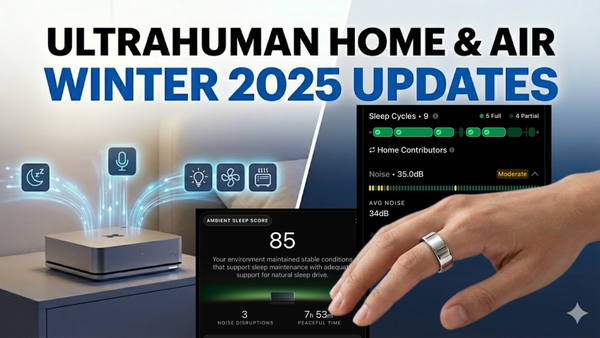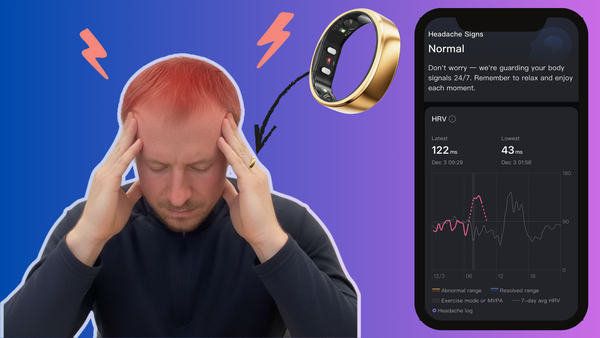Whoop 5.0 / MG – The Good, the Bad, and the Ugly (First Impressions)
Whoop 5.0 is here—smaller (?), more powerful (?), and up to 14 days of battery life. This article offers a fair and honest breakdown of what works, what the company got wrong, and where the new model still overpromises and underdelivers. Step tracking, comparison with the Whoop 4.0 included.
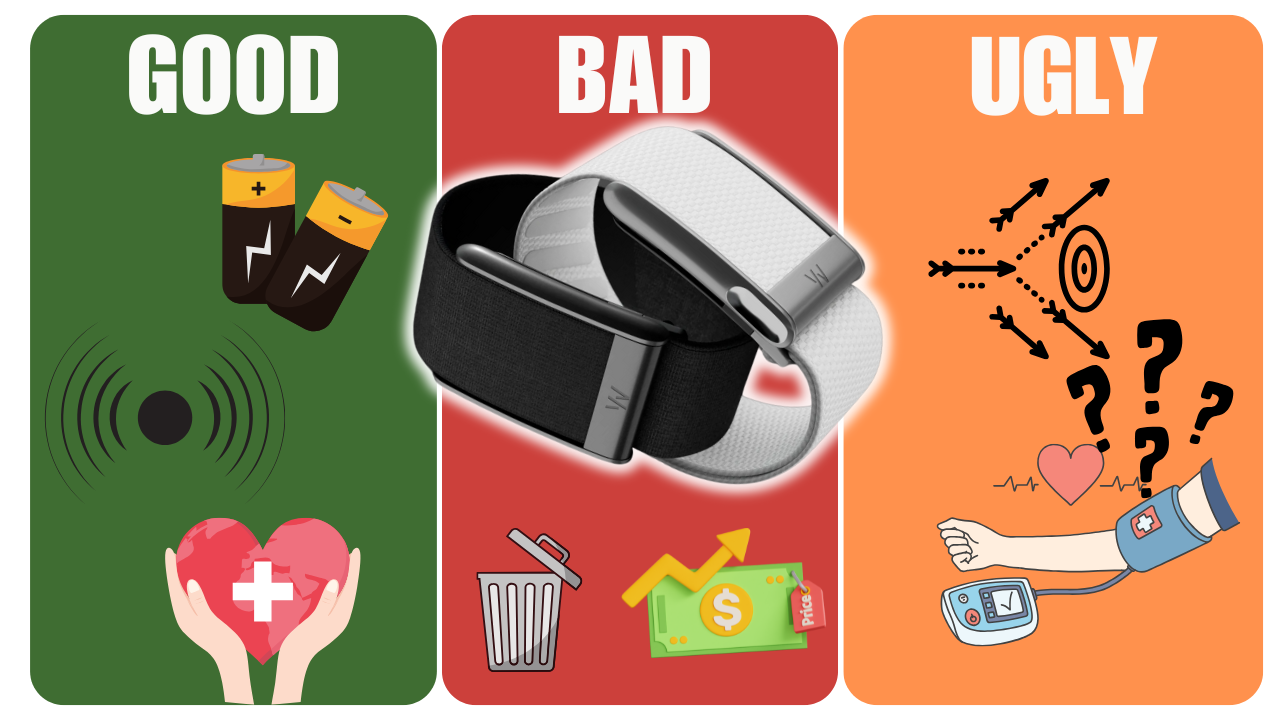
The Whoop 5.0 & MG have officially launched, and as a long-time user of the previous 4.0 generation, I didn’t hesitate to strap the new model onto my wrist (since some of the new features don’t work when worn on the bicep).
We built this site to test, compare, and review smart rings—but we strongly believe it’s essential to evaluate them in the broader context of the wearable ecosystem.
That’s why we’re also testing devices like the Whoop 5.0. Understanding how it stacks up helps us better judge what smart rings are doing right—and where they still need to catch up.
In this article, I’ll share my honest first impressions and break down what’s good (well-designed), bad (disappointing), and ugly (problematic) about the new Whoop 5.0 and MG.
The goal is to clearly explain the evolution between generations—for everyday wearables enthusiasts, not just hardcore athletes.
Let’s dive in 💥
Existing users upgrade from the 4.0 to the 5.0 through their ongoing subscription (more on that below).
For many people, the subscription model still feels hard to swallow. Yet, it might be an early glimpse into a Black Mirror–style future that won’t sit well with the average consumer.
🔬 Generational Differences
Let’s start by summarizing the main differences between the Whoop 4.0 and the new Whoop 5.0—specifically the MG version, where “MG” stands for the more premium “Medical Grade” sensor package.
The table below compares key specs, features, and compatibility between the two generations:
| Feature / Parameter | Whoop 4.0 | Whoop 5.0 (Standard & MG) |
|---|---|---|
| Size & Weight | approx. 36 × 25 × 10 mm, ~11.3 g | ~7% smaller body (34.7 × 24 × 10.6 mm), ~12.1 g |
| Battery Life | ~5 days per charge | Up to ~14 days per charge. New wireless PowerPack provides up to ~14 extra days of battery life |
| Processor & Performance | – (older generation processor) | Faster processor (+60% performance) for quicker syncing |
| Sensors | Optical PPG for HR/HRV + SpO₂ + skin temperature; accelerometer, gyroscope; no ECG | Enhanced PPG (~26 Hz sampling rate), accelerometer, gyroscope; MG model adds ECG electrodes in the strap |
| Health Features | HR, HRV, SpO₂, respiration, temperature, sleep, recovery; daily strain | All from 4.0 + Healthspan (biological age & aging rate), Stress Monitor, Women’s Health, Advanced Labs. MG + Life plan adds ECG (AFib) & blood pressure (beta) |
| Vibration & Alarm | Vibration motor | Upgraded haptic motor |
| Display | None (screen-free design) | None – retains the minimalist screen-free design without distracting notifications |
| Bands & Accessories | Whoop 4.0 strap system; Battery Pack 4.0 (water-resistant) | New strap system (not compatible with 4.0); new variants (e.g. leather). Battery Pack 5.0 is wireless, magnetic, waterproof, and not backward compatible |
| Membership & Price | Single membership (~$30/month), device included with subscription | 3 tiers: One ($199/year), Peak ($239/year), Life ($359/year). 5.0 hardware included in One/Peak; MG version only with top-tier Life plan |
We’ll dive deeper into each feature in the following sections.

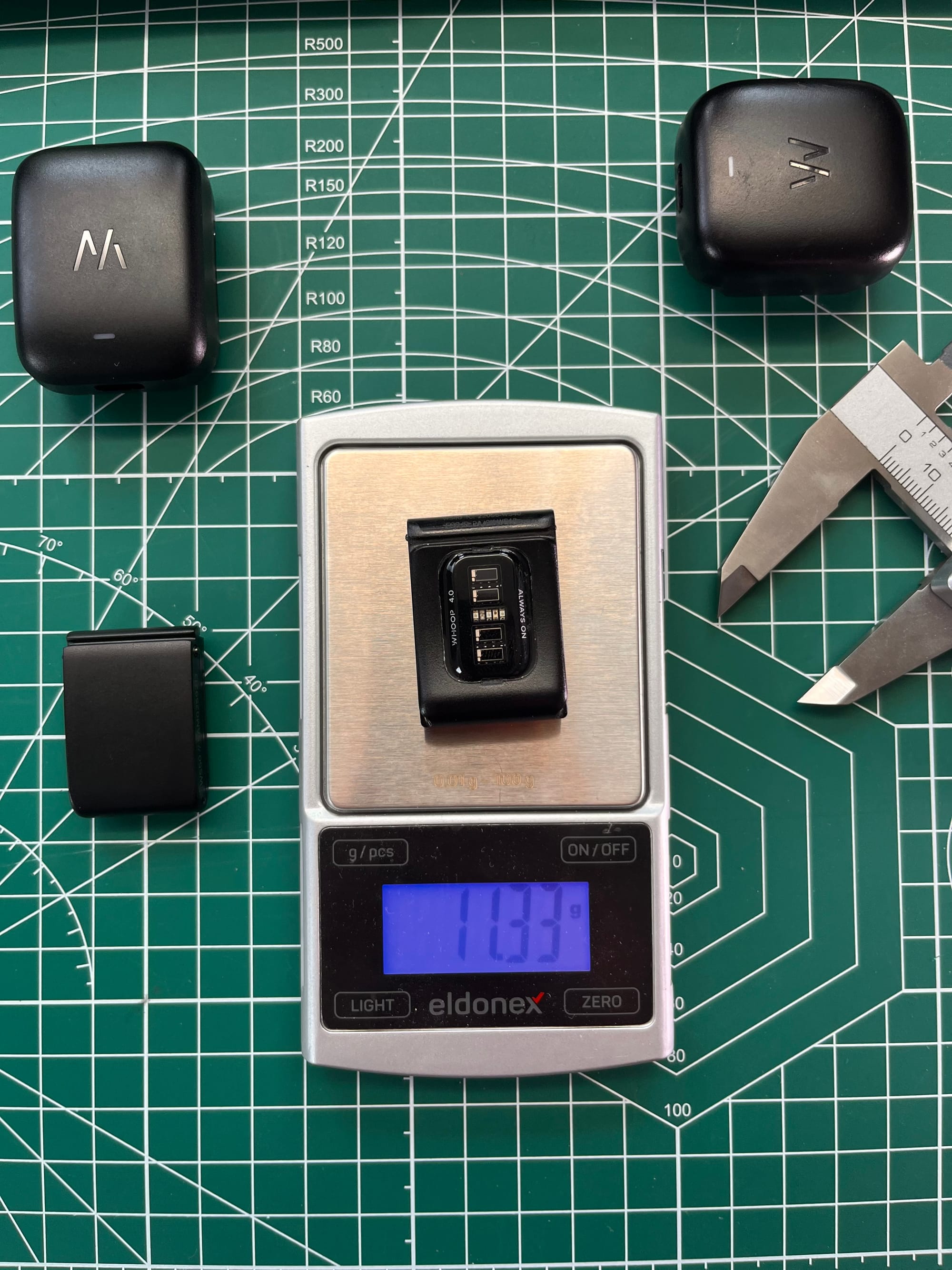
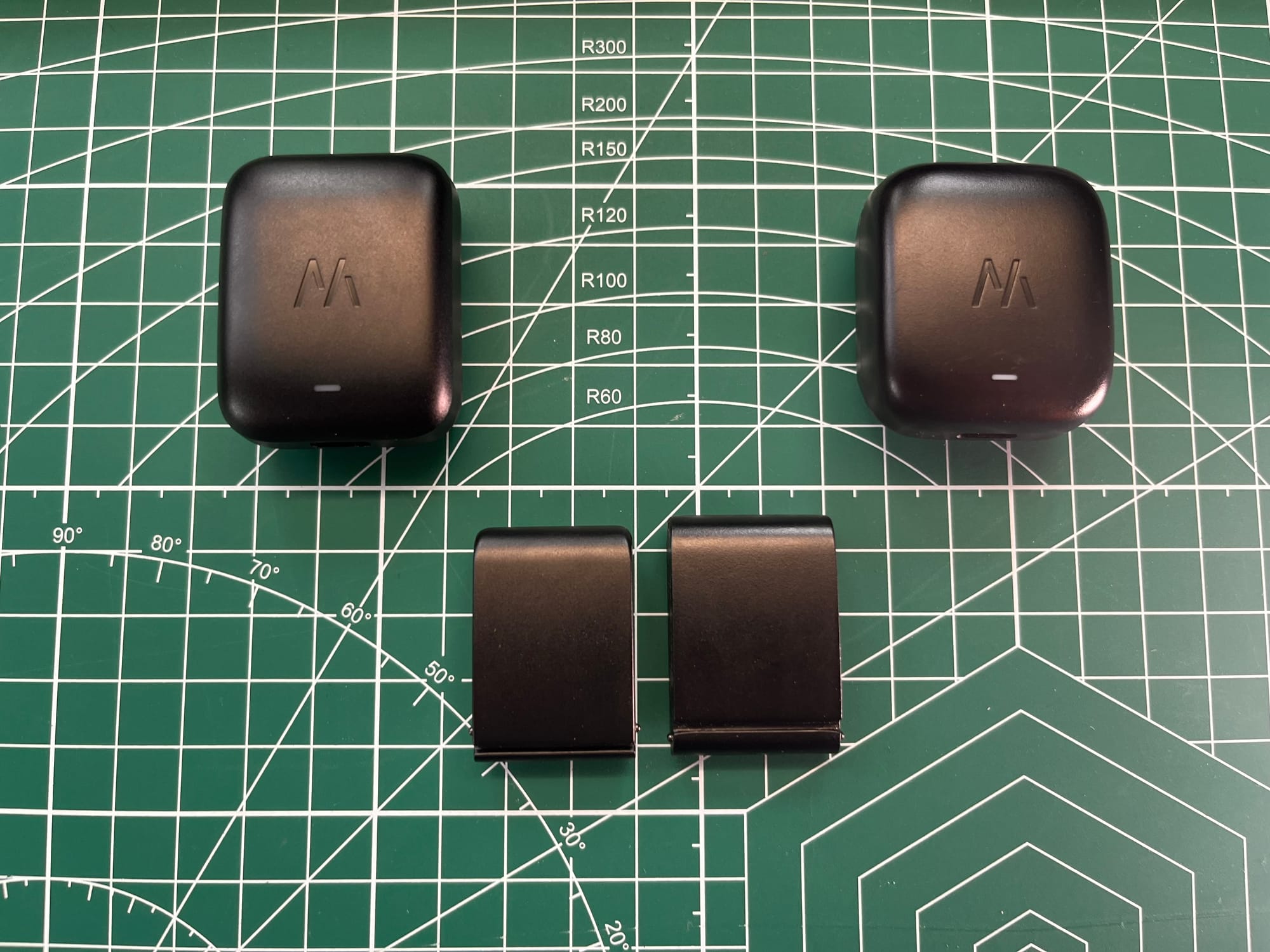
👍 The Good: What’s Great About Whoop 5.0 & MG
Whoop 5.0 brings several welcome upgrades and new features worth highlighting:
🔋 Longer Battery Life:
Battery life has seen a major boost—from around 5 days with the Whoop 4.0 to a claimed 14 days with the 5.0. In practice, that claim holds up: after 7 full days, the battery was still at 50%.
That’s a huge improvement, especially for frequent travelers or users who dislike constant charging. The new battery pack charges wirelessly and holds enough juice to power the band for an entire month.
A nice extra: the PowerPack is now IP68-rated, so you can even charge in the shower.
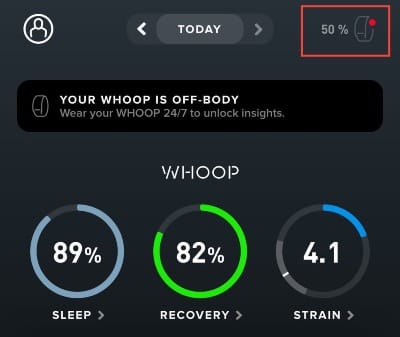
📳 Improved Vibration Alarm:
The Whoop 4.0 introduced a silent vibrating alarm that gently woke me up each morning. With version 5.0, the company upgraded the haptic motor—it’s now stronger and designed to wake you more reliably.
Personally, I consider the silent alarm one of Whoop’s best features. Being woken up by a gentle vibration during a light sleep phase (more on that another time) is far more pleasant than a jarring traditional alarm.
🧑🤝🧑 Broader Appeal Beyond Just Athletes:
Previous Whoop generations primarily targeted athletes—emphasizing training strain and recovery. But the 5.0 expands its focus to include the general wellness crowd.
It now includes features like Healthspan (measuring biological age and aging rate) and has added support for women’s health (tracking menstrual cycles and hormonal trends).
It’s clear that Whoop is aiming to become more of a daily health companion rather than just a sports tracker.
🩹 Accessories:
New bands—especially the Leather Luxe option—give the tracker a much more elegant look. You can now wear it with a suit or dress where the sporty strap would have looked out of place.
🤏 Slightly Smaller (?):
The new Whoop is about 7% smaller in volume—not a huge difference, but still appreciated.
Despite a slight weight increase, it remains very compact and comfortable. I used to wear the 4.0 exclusively on my bicep, but I’ve switched to wearing the MG version on my wrist. Compared to the bulky Garmin Fenix 8 I usually wear on that spot, I appreciate the minimalism.
And of course, it’s worth highlighting that Whoop has stuck to its screen-free design—no distractions, just data.

🙅 The Bad: What Missed the Mark (Critical Drawbacks)
Not everything went smoothly. Let’s look at the aspects of Whoop 5.0 that have drawn criticism or disappointment:
🤑 Incompatibility with 4.0 Accessories:
Unfortunately, Whoop changed the strap width with the new generation, meaning all existing bands for the 4.0 are incompatible with the 5.0. The size difference is minimal—Whoop 5.0 is just 1 mm narrower but slightly thicker—yet it still renders old accessories unusable.
Many users see this as an unnecessary change designed to force accessory upgrades. Even the 4.0 charging pack physically fits on the 5.0 body, but it won’t charge it—fueling suspicion that the incompatibility was intentional.
So if you’ve invested in colorful bands or extra battery packs for the 4.0, you’re out of luck and will have to buy new ones. This move sparked backlash in forums—one frustrated user noted that even Apple Watch bands have remained compatible across generations, while Whoop seems to be forcing loyal users to repurchase everything.
Personally, I see this as wasteful—and it feels especially ironic (if not outright greenwashing) that the new Whoop ships in a “recyclable & compostable” package…
📈 High Cost & Mandatory Subscription:
Whoop has always been a premium service—but with the 5.0, that’s more obvious than ever. You can’t buy the band outright—it comes “free” with a paid membership that costs hundreds of dollars per year.
The new model introduces three subscription tiers, but full functionality is only available with the most expensive “Life” plan.
The base-level Whoop One (around $199/year) is more limited than the previous 4.0 plan—for example, it lacks advanced stress tracking and only includes basic cable charging.
Sure, Whoop 5.0 is trying to appeal beyond elite athletes, but price-wise it’s still very much in the luxury club.
To put it in perspective: the annual Life plan (roughly $360) is equivalent to buying a high-end sports watch—except with Whoop, you have to pay that amount again every year.
This paywall turns off many potential users and, for the average consumer, the value-for-money ratio may not make sense.

🆓 No “Free Upgrade” After All:
Existing Whoop users were disappointed by how the company handled the transition to the new generation.
Previously, Whoop had promised that users with at least 6 months of prepaid membership would receive the new model for free upon release.
Now, however, that offer only applies under certain conditions—specifically for PEAK subscribers with 12 or more months of active membership.

I’ve already covered this issue in more detail in the article below.
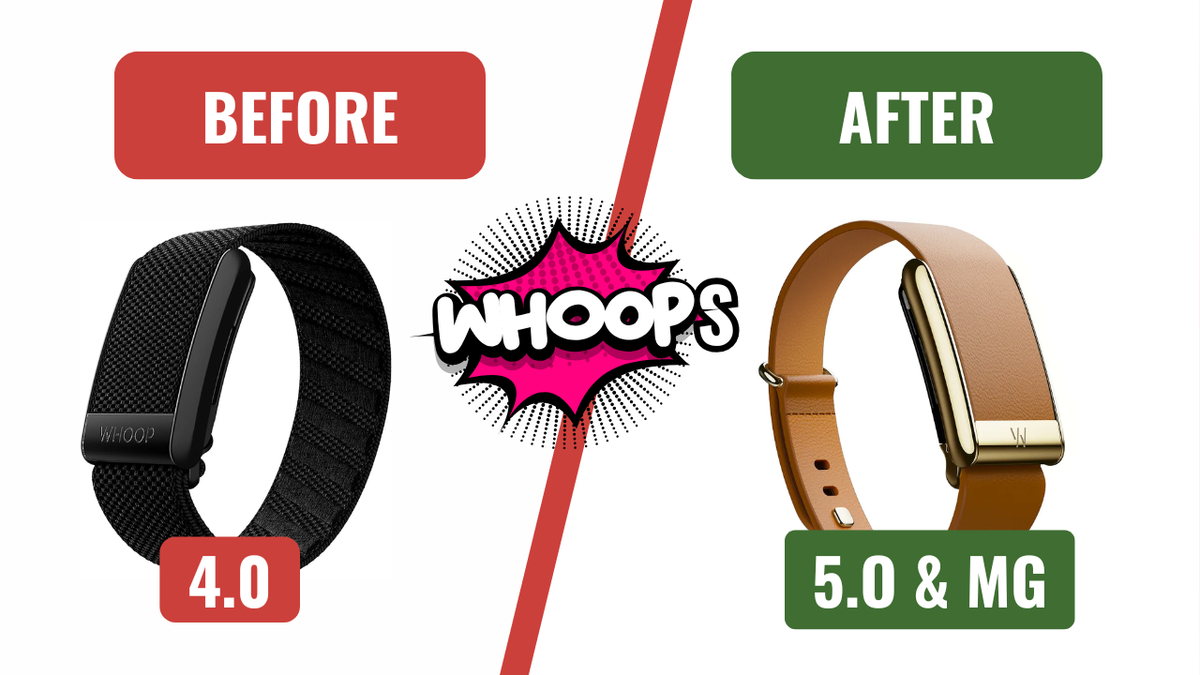
❔ The Ugly: Controversial or Unpolished Features
Lastly, let’s cover the aspects of Whoop 5.0 that are more controversial—features that spark uncertainty or may prove useful only with time and further development:
💗 ECG and Blood Pressure:
Among the most hyped new features of the Whoop 5.0/MG are ECG readings and Blood Pressure Insights—an estimate of blood pressure derived from wrist-based sensors.
On paper, it sounds impressive. In practice, though, the execution falls short.
- ECG: This function is only available on the MG model with a Life membership and requires the user to place their fingers on the metal clasp. However, several users have reported that the ECG doesn’t work at all or is unreliable—one Reddit tester even said they’ve “stopped trying because it never worked.” While Whoop did receive FDA clearance for detecting atrial fibrillation, the feature is clearly problematic if it fails to launch or produces errors. Personally, I had to repeat the measurement multiple times just to get a usable result. The method is similar to what Garmin or Apple Watch Ultra uses—it’s a single-lead ECG.
- Blood Pressure: Whoop estimates blood pressure based on variations in pulse wave patterns. However, a traditional cuff-based blood pressure monitor is required for the initial calibration. And here’s the catch—the app doesn’t allow you to input very low values during the calibration process, which has already caused frustration among users.
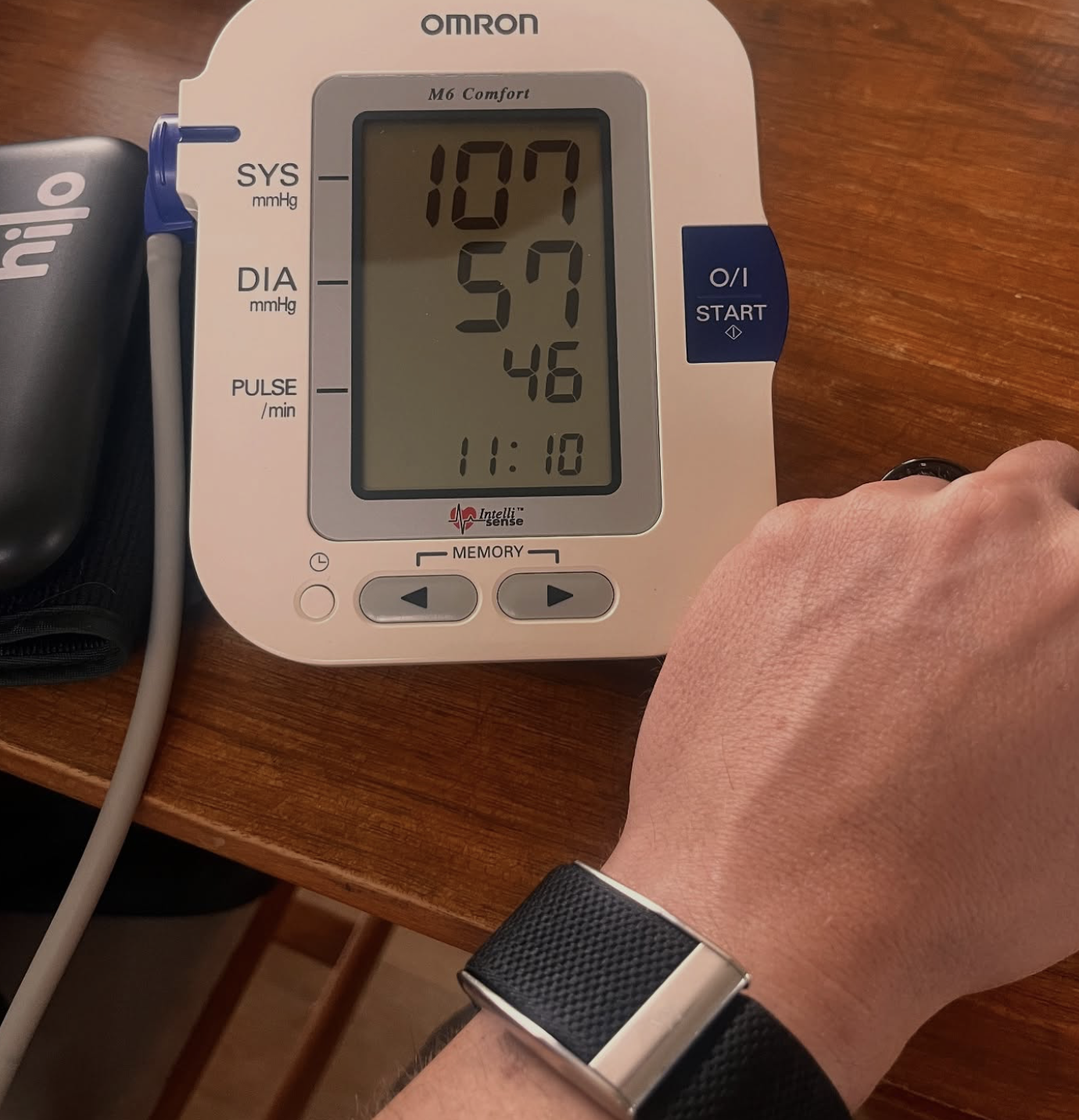

- Overall, these “revolutionary” health features remain hit-or-miss. They might improve over time with algorithm updates and broader support, but right now they feel more like unfinished beta features—especially the blood pressure tracking. Great for marketing, less convincing in real-world use.
🚨 Persistent Sensor Limitations:
While the Whoop 5.0 promises more accurate readings (thanks to a higher sampling frequency), some long-standing issues haven’t gone away.
Heart rate tracking during high-intensity activities (like HIIT, CrossFit, or running) is still a weak point for Whoop’s optical sensor—it can lag behind or show inaccuracies during rapid heart rate changes.


QS test
It’s also worth noting that optical PPG sensors inherently have limitations, and context matters—a loose strap, sweat, tattoos, and other factors can all affect accuracy.
- 🚶♂️ Historically, Whoop didn’t track steps at all—a common complaint. Step tracking was later introduced in beta, but in my comparison (from the “Best Smart Ring: Steps” series), its performance was poor. That said, the new version promises a noticeable improvement.
In my ongoing test comparing Whoop 4.0, Whoop MG, and the scientifically validated StepWatch5 ankle pedometer, the MG version performs slightly better:
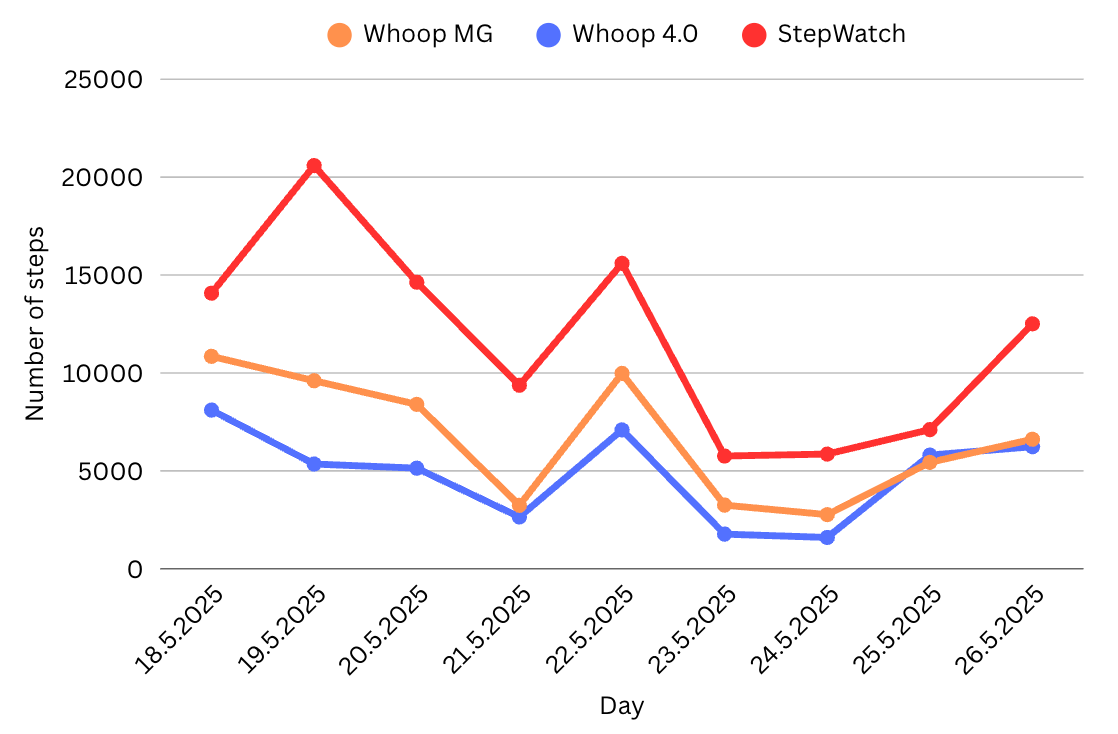
Conclusion: Verdict After a Week With Whoop 5.0
In many ways, the Whoop 5.0 is a solid step forward—it’s slightly smaller, offers significantly longer battery life, and its broader feature set appeals not just to athletes but also to biohackers and general wellness enthusiasts.
The MG version, in particular, could be considered one of the most comprehensive health trackers currently on the market.
That said, there are a few letdowns—especially in how Whoop has handled existing customers (paid upgrades, pricier memberships, and incompatible accessories), which understandably upset loyal users.
And we can’t ignore the still-shaky elements: some of the most hyped features, like ECG and blood pressure tracking, aren’t quite living up to expectations yet.
In the world of wearables, it’s increasingly clear that progress is driven more by business models than by true sensor innovation—this is more of an evolutionary step than a revolutionary leap.
Whoop with 1 month free.
So, Who Should Get the Whoop 5.0?
If you’re already using the Whoop 4.0 and are happy with it, the upgrade isn’t a must-have. Functionally, the main gains are in longevity metrics (if you opt for a higher-tier plan) and better battery life.
If you’re thinking about switching to the 5.0, be ready to buy new straps—and possibly give up some of the perks of the older membership plan, since the basic “One” tier doesn’t include everything that the 4.0 plan did.
For brand-new users, the Whoop 5.0 may be one of the most advanced health-focused wearables available. It offers features you won’t easily find elsewhere—like long-term Healthspan tracking, continuous recovery analysis, and community challenges inside the app.
Just keep in mind, all of that is locked behind a subscription.
As for me—I’m sticking with the Whoop MG for now and will keep sharing updates on whether these “ugly duckling” features evolve into a truly helpful partner for a healthier life.



